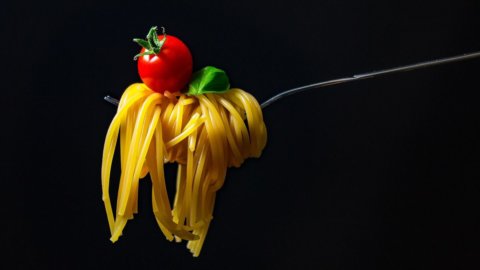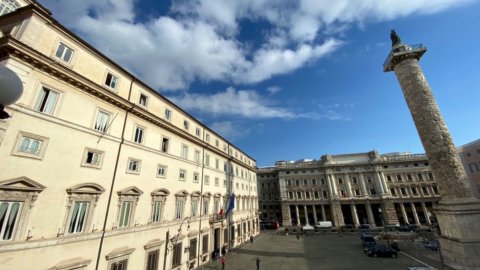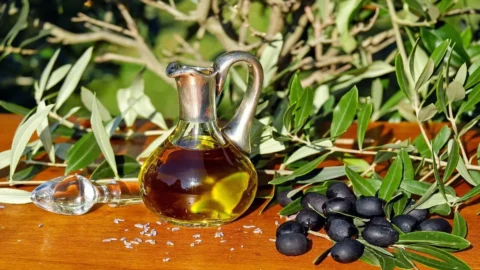Tagliatelle, spaghetti, penne, fusilli, maltagliati: today there are about 130 types of pasta diverse, the undisputed queen of Italian cuisine. For 23 years, World Her Day has been celebrated, the World Pasta Day. The goal of the Day is to celebrate "a food that is unique in the world, with its different forms, cooking methods, condiments and recipes" and consequently the capacity of a food so universal that it has always been able to unite cuisines, peoples, cultures that are very distant from each other.
Pasta is affected by climate change and energy price increases
Pasta is an accessible, versatile food but above all easy to prepare. To continue producing excellent food from an organoleptic point of view and with high quality standards, it is essential to support the Italian cereal sector, because important investments are needed. He underlined it Confagricoltura on the occasion of World Pasta Day, reaffirming the importance of putting the cereal sector back at the center of national agriculture. Even pasta, however, suffers the repercussions of climate change and the increases in production costs due to energy crisis.
"Which is why it is essential to adapt our production capacity to the climate, to sustainably intensify production through tangible and intangible investments", underlined Confagricoltura.
Now more than ever, according to the Agricultural Organization, it is necessary to resort to research and technologies and the arable sector it is one of those that can benefit most from innovation in all fields: from precision agriculture to last generation genetic improvement.
They are then needed new protocols for the definition of quality parameters, as well as promoting and guaranteeing the adoption of increasingly clear and transparent supply chain contracts, so as to make the cultivation of durum wheat more profitable for all operators. To this end, the system "FruClass“, conceived by the University of Tuscia and supported by the Agrinsieme Coordination, as part of the protocol for the valorisation of durum wheat, signed with all the organizations of the “durum wheat-pasta” supply chain.
Pasta: Italy world leader
Italy is in fact the first country pasta producer, with 3,6 million tons a year, 61% exported (before Turkey and the United States). The turnover generated by 120 companies employing 10 people is 5,5 billion euros. According to data from the International Pasta Organization, promoter of the “World Pasta Day” with the Italian Food Union – our country is also among the top consumers, with 23 kg per capita per year, ahead of tunisia (17) Venezuela (15) Greece (12,2) Chile (9,4kg), United States (8,8kg), Argentina e Turkey tied (8,7 kg).
If 2021 recorded 2,2 million tons of pasta Made in Italy: exported, Coldiretti calculations (based on Istat data) reveal a record 33% increase in exports in the first 7 months of 2022. It is the Germans who spend the most to buy Italian pasta, with an increase of 31% in the last year , while, in second place, are the United States, where the increase was as much as +45%, also under the influence of the weak euro against the dollar. In third place, France with an increase of 25%.
The production of pasta at a national level
According to an elaboration by the Confagricoltura Study Center, the cultivation of durum wheat in our country covers 1,26 million hectares and is the most extensive crop in Italy, with a total harvested production of over 3,9 tons. There Puglia it is among the regions with the greatest presence of hectares cultivated with durum wheat respectively (344.700 hectares and 688 thousand tons of harvested production); Sicilia 272.405 hectares and 813 thousand tons) e Basilicata (115.236 hectares for 321 thousand tons). Me too'Emilia Romagna and Marche stand out in the Top 5, respectively with 85 and 90 hectares, producing 375 and 467 tons of durum wheat.
Pasta is eaten al dente even abroad
On the other hand, the philosophy of Pasta al dente has also established itself abroad. This was stated by 82% of the chefs questioned. In France e United States pasta is al dente in practically all restaurants. While 18% – with peaks of 40% in Japan – prefers it overcooked. And there are also few compromises with respect to local customs: 55% of restaurants serve regional Italian recipes, 31% re-propose the tradition and only 14% believe that glocal is the right way. Even the recipes that have little to do with Made in Italy disappear in 73% of restaurants.
What are the ingredients of the pasta?
The lowest common denominator of the different types of dry pasta are two ingredients: the semolina (durum wheat flour) e water. While in fresh pasta, semolina is generally replaced with soft wheat flour (wheat flour). Furthermore, as an alternative or together with the water, the egg is added which makes the dough even softer and more manageable. Using wholemeal flour or semolina you can make wholemeal fresh pasta.
What are the nutritional properties of pasta?
Representing one of the main meals of the everyday diet, it is necessary to take some precautions both in the choice of the product and in the preparation baking and in preparazione (a lot depends on the seasoning).
Secondo Humanitas Medical Care 100 grams of pasta provide about 124 calories and contain: water, carbohydrates, proteins, lipids, vitamin B6, vitamin B9 or folic acid, sodium, potassium, iron, calcium, phosphorus, magnesium, zinc, vitamin B1 or Thiamine, vitamin B2 or Riboflavin, Vitamin B3 or Niacin (or Vitamin PP). Therefore, not only carbohydrates, pasta is also a good concentration of energy and nutrients essential for our body.
The few fats present are mainly monounsaturated, while cholesterol is completely absent. The Vitamins of group B, especially B1, are essential for the correct functioning of the nervous system with an anti-stress function, and B3, necessary for cellular respiration. Vitamin B3 also helps metabolize carbohydrates, fats and protein and promotes blood circulation and skin health. Consumed together with legumes, pasta is also a dish of high nutritional value and easily digestible.
Controindicazioni
However, fresh pasta, being a food made from flour or wheat semolina, contains gluten and therefore cannot be consumed by celiac subjects or by people suffering from gluten intolerance.





